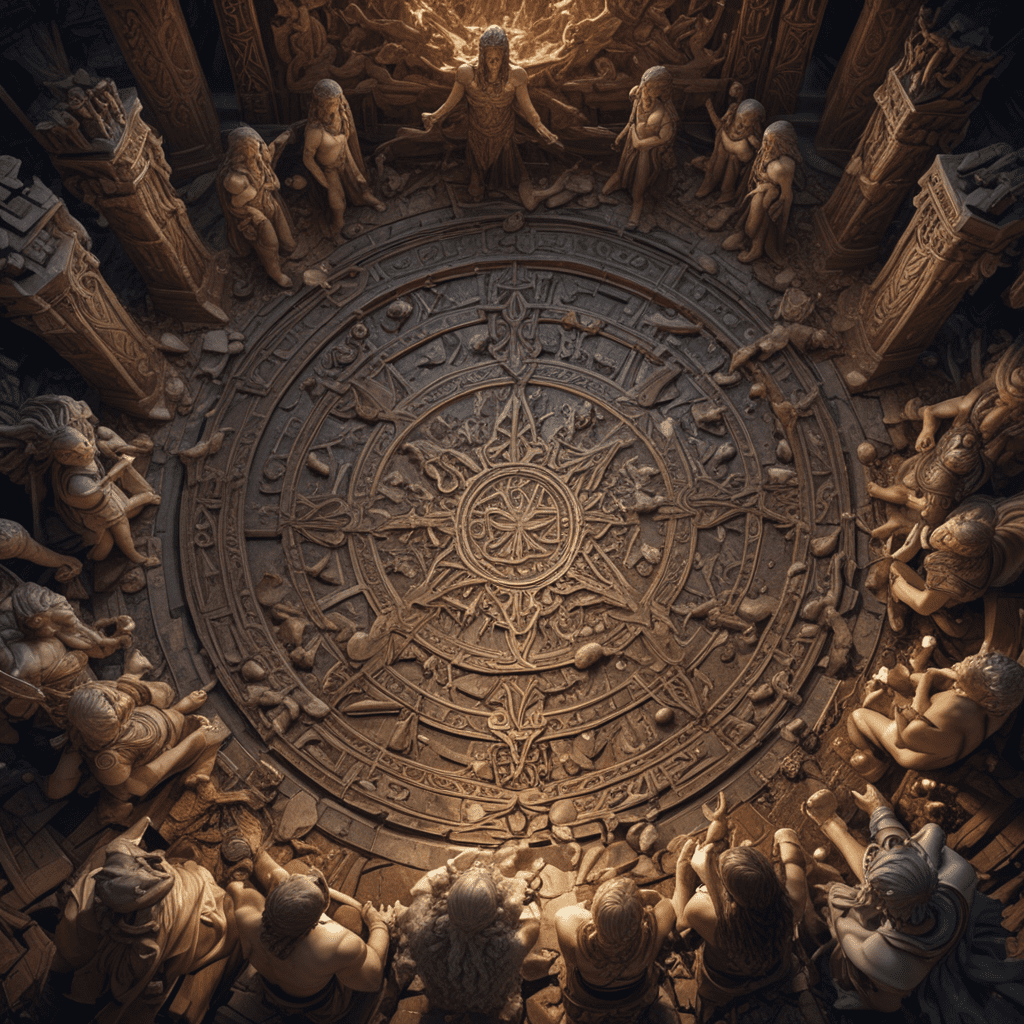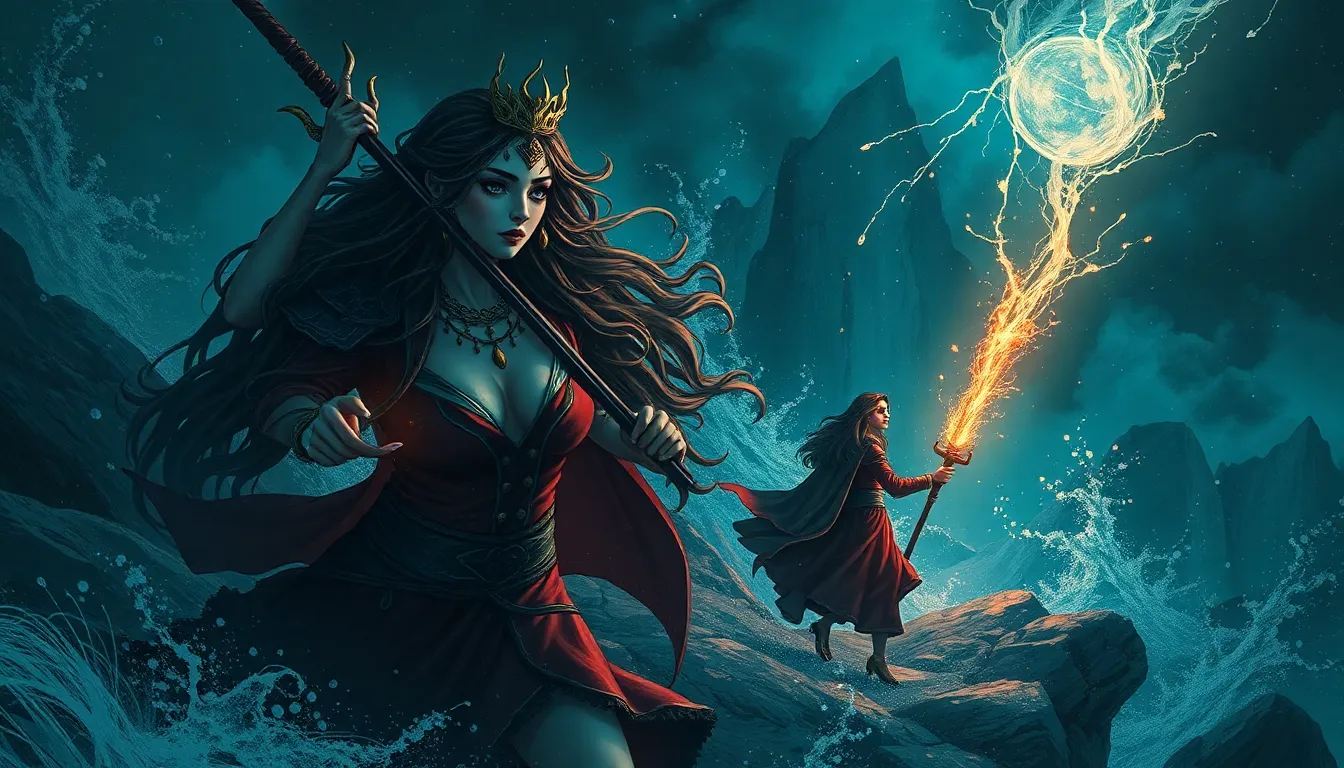The Concept of Order and Chaos in Slavic Mythology
Introduction
Slavic mythology, a rich tapestry of beliefs and stories, depicts a dynamic interplay between the forces of order and chaos. This duality permeates the Slavic worldview, shaping the deities, rituals, and folktales that have been passed down through generations.
The Cosmic Tree and the World Axis
At the heart of Slavic cosmology lies the Cosmic Tree, a sacred symbol that represents the axis mundi, the central axis connecting the heavens, earth, and underworld. The tree's branches extend to the heavens, while its roots reach into the depths of the earth, symbolizing the interconnectedness of all realms.
The Dualistic Nature of Slavic Mythology
Many Slavic deities embody both orderly and chaotic aspects. For instance, Perun, the god of thunder, is also associated with fertility and abundance. Similarly, Morana, the goddess of death and winter, brings about renewal and rebirth as the seasons change.
The God of Thunder and Order: Perun
Perun, the supreme god in many Slavic pantheons, represents order and justice. As the god of thunder and lightning, he wields his power to protect the cosmic order and punish those who disrupt it. His thunderous presence brings both fear and awe, reminding mortals of the importance of adhering to sacred laws.
The Goddess of Death and Chaos: Morana
Morana, a complex and enigmatic figure, embodies the destructive and chaotic aspects of the natural world. As the goddess of death and winter, she brings about the end of life and the slumber of the earth. However, her presence also signifies renewal and the return of spring, as she clears the way for new life to emerge from the chaos she creates.
The Struggle between Order and Chaos
The interplay between order and chaos is a constant theme in Slavic mythology. The gods of order, such as Perun, constantly strive to maintain balance and harmony, while the forces of chaos, like Morana, challenge their authority. This struggle plays out in both cosmic and human affairs, reflecting the eternal battle between good and evil.
The Role of Rituals and Festivals in Maintaining Order
Slavic mythology emphasizes the importance of rituals and festivals in maintaining order and warding off chaos. These rituals, often performed at specific times of the year, serve to strengthen the bonds between the gods, the people, and the natural world. By participating in these rituals, individuals and communities reinforce the cosmic order and protect themselves from the forces of chaos.
The Importance of Boundaries and Transitions
Slavic mythology places great significance on boundaries and transitions. The boundary between the human world and the supernatural realm is often fluid, and certain places, such as crossroads and forests, are considered to be particularly dangerous. Rituals and customs are often associated with these transitions, such as the use of protective charms or the performance of specific incantations to appease malevolent spirits.
The Notion of Dualism in Slavic Folktales
The concept of order and chaos also manifests in Slavic folktales. Many tales feature characters who embody both good and evil qualities, and their actions often have both positive and negative consequences. This dualistic nature reflects the Slavic belief that both order and chaos are essential aspects of life, and that finding balance between the two is crucial for harmony and well-being.
Conclusion
The concept of order and chaos is deeply embedded in Slavic mythology, shaping the deities, rituals, and folktales of this rich tradition. The interplay between these opposing forces reflects the Slavic worldview, which emphasizes the interconnectedness of all things and the eternal struggle between good and evil. By understanding the dynamics of order and chaos, we gain insight into the complex and multifaceted nature of Slavic mythology.
FAQ
Q: How did the Slavs view the relationship between order and chaos?
A: The Slavs believed that order and chaos were two essential aspects of life, and that finding balance between the two was crucial for harmony and well-being.
Q: Who was the most important god in Slavic mythology?
A: Perun, the god of thunder, was the supreme god in many Slavic pantheons, representing order and justice.
Q: What role did rituals and festivals play in Slavic mythology?
A: Rituals and festivals were an essential part of Slavic mythology, as they served to strengthen the bonds between the gods, the people, and the natural world, and to ward off chaos.



